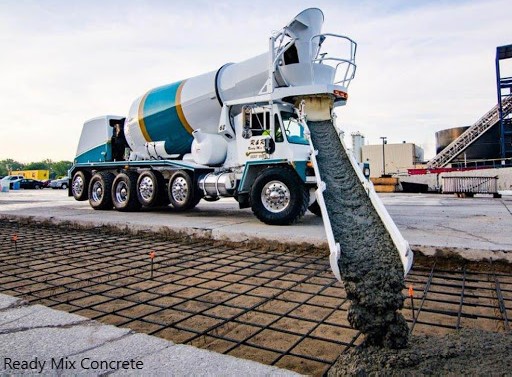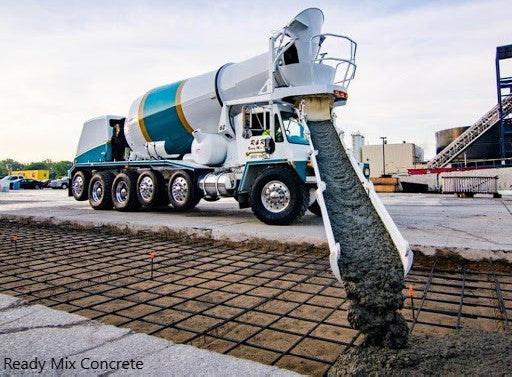Civil engineers around the world constantly face the challenge of having to work in cold temperatures that can make concreting difficult. Pouring concrete in cold weather requires careful planning and execution to be successful and to avoid potential problems such as cracking and excessive shrinkage.
In this article, we will discuss helpful tips for pouring concrete in cold weather, concrete pouring procedures in cold weather, and strategies to ensure the success of your projects.
Why We Need to Be Careful When Pouring Concrete in Cold Weather
One of the most important aspects of successfully pouring concrete in cold weather is temperature control. Concrete must be processed at a temperature above freezing so that it can cure properly and reach its full strength. If the temperature of the concrete mix gets too low, it can cause the concrete to not cure properly, which can lead to a reduction in strength and durability.
Additionally, cold weather can cause concrete to harden too quickly, which can cause problems like cracking and spalling.
Temperature Controller
The main challenge is to maintain the concrete temperature at an adequate level to complete the hydration process. This challenge arises from three types of temperatures.
- Soil temperature
Care must be taken not to place the concrete on frozen ground or a frozen surface. This would significantly affect the hydration process.
- Concrete temperature
Concrete temperature is an indicator of heat development during cement hydration.
According to industry standards and some guidelines, the concrete placement temperature should not be less than 5°C. 0 C. Furthermore, it is recommended that the concrete temperature be maintained above 5°C after placement. 0 C for at least the first 48 hours to allow the concrete to develop sufficient strength to prevent freeze damage, which is the formation of microcracks in the concrete due to the increased volume of ice.
- Air temperature
It is customary to carry out concrete work when the air temperature is not lower than 5°C. 0 C. If we pour concrete below 5°C, 0 C, this must be done under close supervision and with expert advice.
See how to deal with the problem
One way to avoid these problems is to use an additive, which is a material added to the concrete mix to change its properties. Additives can be used to improve concrete's workability, increase its strength, and increase its resistance to freezing and thawing cycles. A commonly used additive in cold-weather concrete is calcium chloride, which can help prevent concrete from freezing.
Another important consideration when pouring concrete in cold weather is the use of insulation. Insulating concrete can help trap heat within the concrete and prevent it from freezing. There are several different types of insulation that can be used, such as blankets, mats, and spray.


How to change the concrete mix
Although pouring concrete in cold weather is challenging, it can be done successfully as the world develops and the industry has the knowledge and experience needed to do so.
For better performance, the following changes can be made to the concrete mix.
- As there are certain possibilities in developing low strength, we can increase the quality of concrete.
- Accelerator additives can be used to quickly develop strength.
- Use of quick cement
- The cement content can also be increased.
- Using highly effective water reducers can extend setting time.
Other measures for concreting in cold weather
In addition to the methods discussed above, there are other methods that can be used to increase the temperature of the concrete and manage the situation in a way that does not compromise the compressive strength and durability of the concrete.
- Hot mixing process
This is a type of curing method used to control the temperature of concrete ingredients. The temperature of water and aggregates can be increased by heating. Additionally, steam can be introduced into the concrete.
- Electric hardening methods
Basically there are three types of Concrete Hardening Methods. It is possible to pass electric current through the concrete, pass high current at low voltage through the reinforcement mesh and use large electric blankets to heat the concrete surface.
- Infrared healing
The water would be heated or hot water would circulate through the concrete.
- Use of thermal insulation materials
To prevent the concrete surface from getting cold and the concrete from releasing heat into the environment, insulation can be added to the concrete surface.
Methods for pouring concrete
There are several methods for pouring concrete in cold weather. A common method is to use heated screeds, long boards used to level and smooth concrete. Heated screeds can help prevent concrete from freezing and speed up the curing process.
Another method is to use a heated hose, which can prevent the concrete from freezing during transport to the job site.
Concreting in cold weather can be challenging, but with careful planning and execution it can be accomplished successfully. Using additives, insulation, and heated screeds or hoses, you can pour concrete in cold weather and avoid potential problems.

